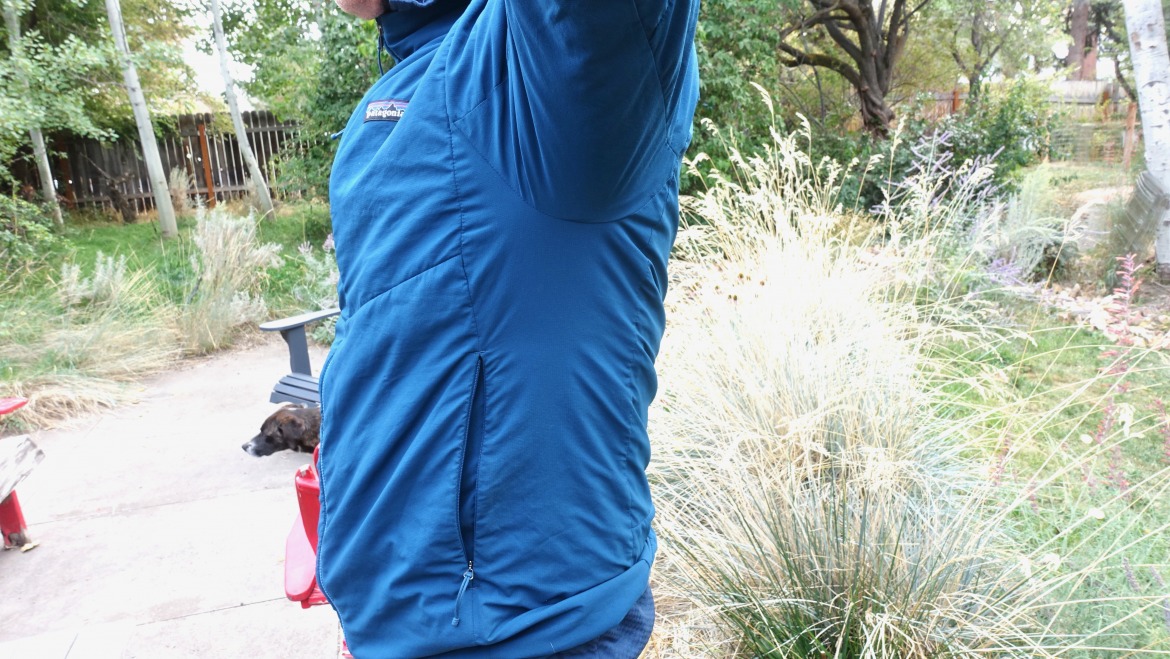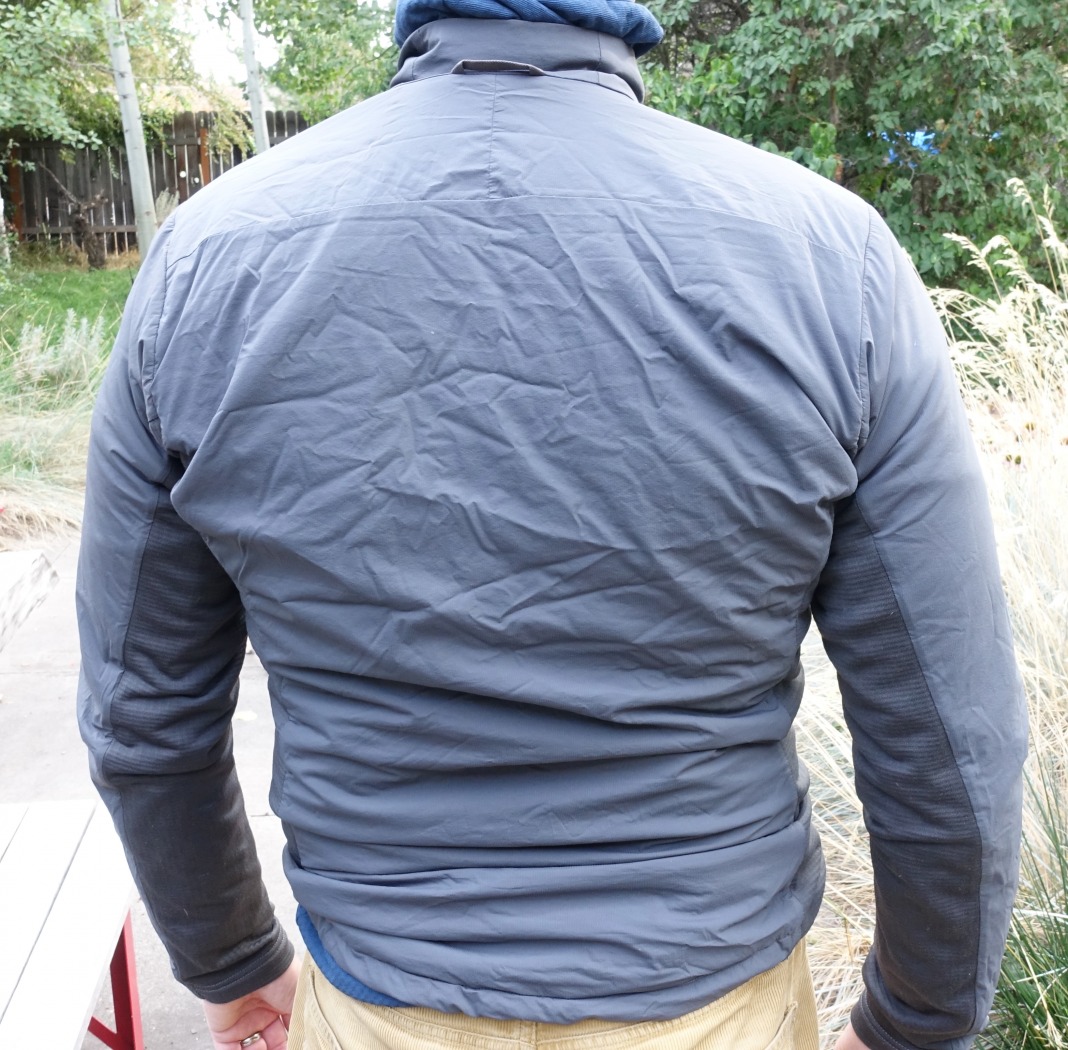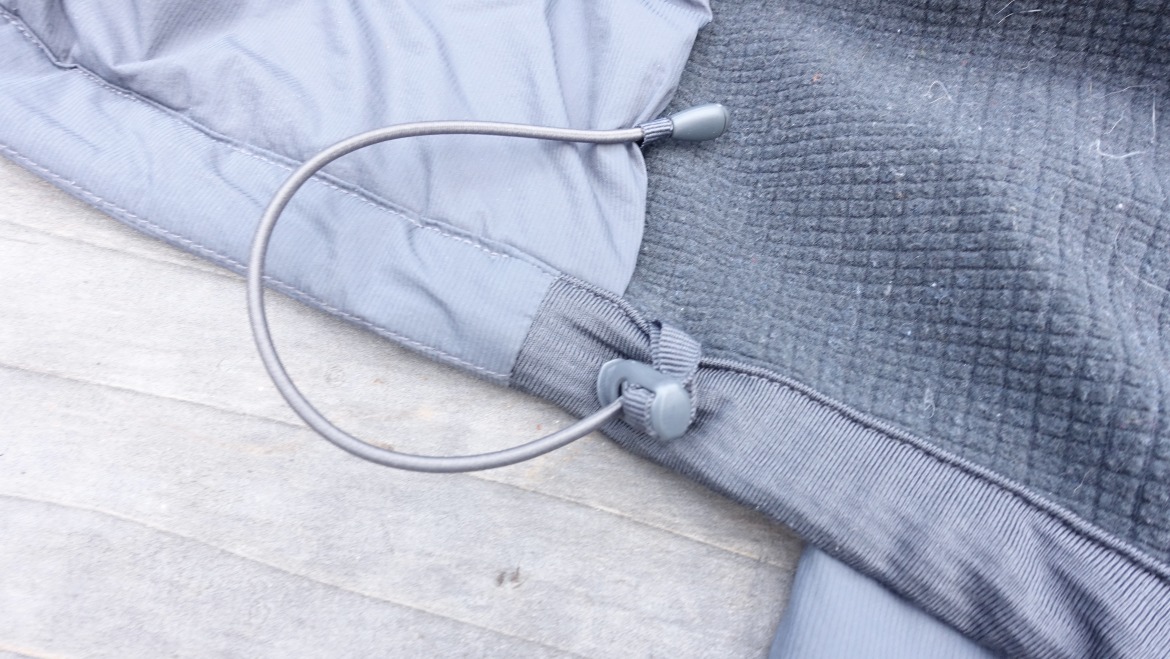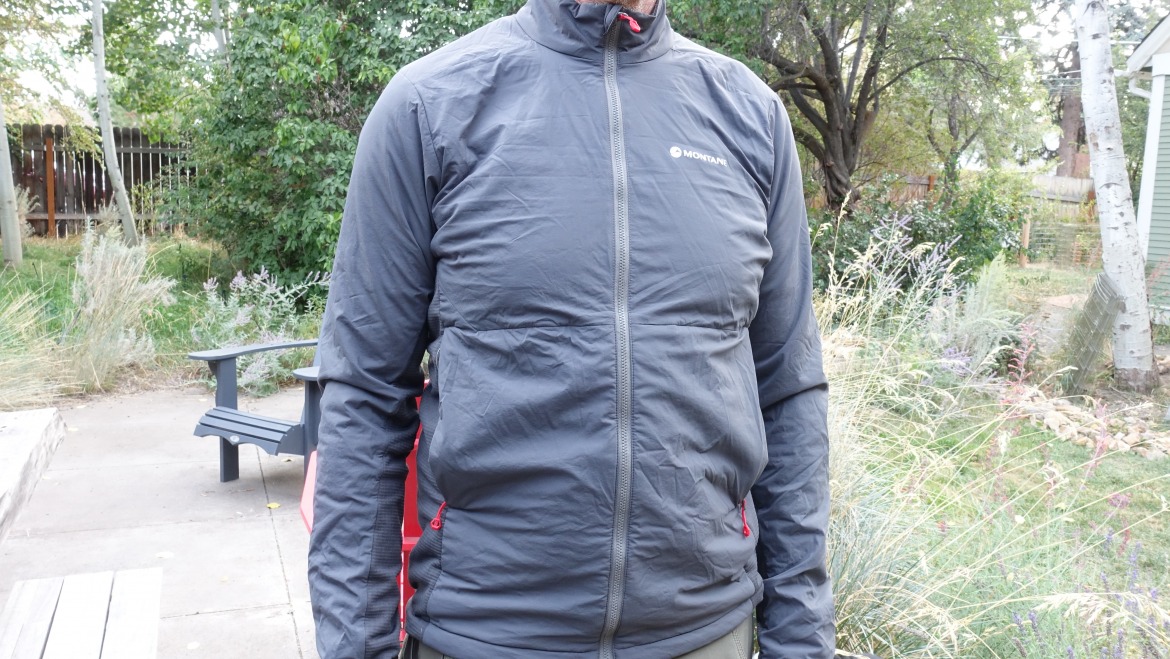
The Montane Fireball Lite jacket is an active insulation piece providing ample heat dumping and wind protection. This is a fitted jacket from the British outdoor apparel company. The fit for this skier is semi-loose across the chest. The fit across the chest for the reviewer was bit more snug (see below).
The active insulation class of jackets is a widening field. British-based Montane and their Fireball Lite jacket enter the field and make the case that this piece is a keeper.
The dawn of the breathable yet warmish insulated jacket, call it the “active insulation” class, likely originated with forward-thinking skiers in the Altai mountains (but that’s just a hunch). In 2014, not long after Patagonia released the Nano-Air hooded jacket, the active insulation category of jackets became a crowded and diverse field. The premise of “active” and “insulation” is simple: provide a semi-permeable (to airflow) face fabric and butter it up with some synthetic insulation to keep the core warm when activity rates settle down to a calm stroll. Ideally, if you are sweating, the fabric can pass some moisture too.
In theory, designing active insulation seems ho-hum: source the semi-permeable fabric, and add some light insulation. In practice, companies often miss the bullseye because marrying the two, active + insulation, is difficult. All of us, for example, thermoregulate differently. I run cold, except when moving uphill. I’m not exactly a sweaty mess, but thermal imaging of my core would glow red-orange on the ups. A few minutes after I cease movement, I’m likely bluish in the thermal image. The trick is to provide enough permeability and insulation to keep the body comfortable. The promise of the golden ticket of active insulation with supreme breathability, moisture transport, and insulation seems to be an elusive trifecta. Yet, there are some aspirational active insulation pieces out there.
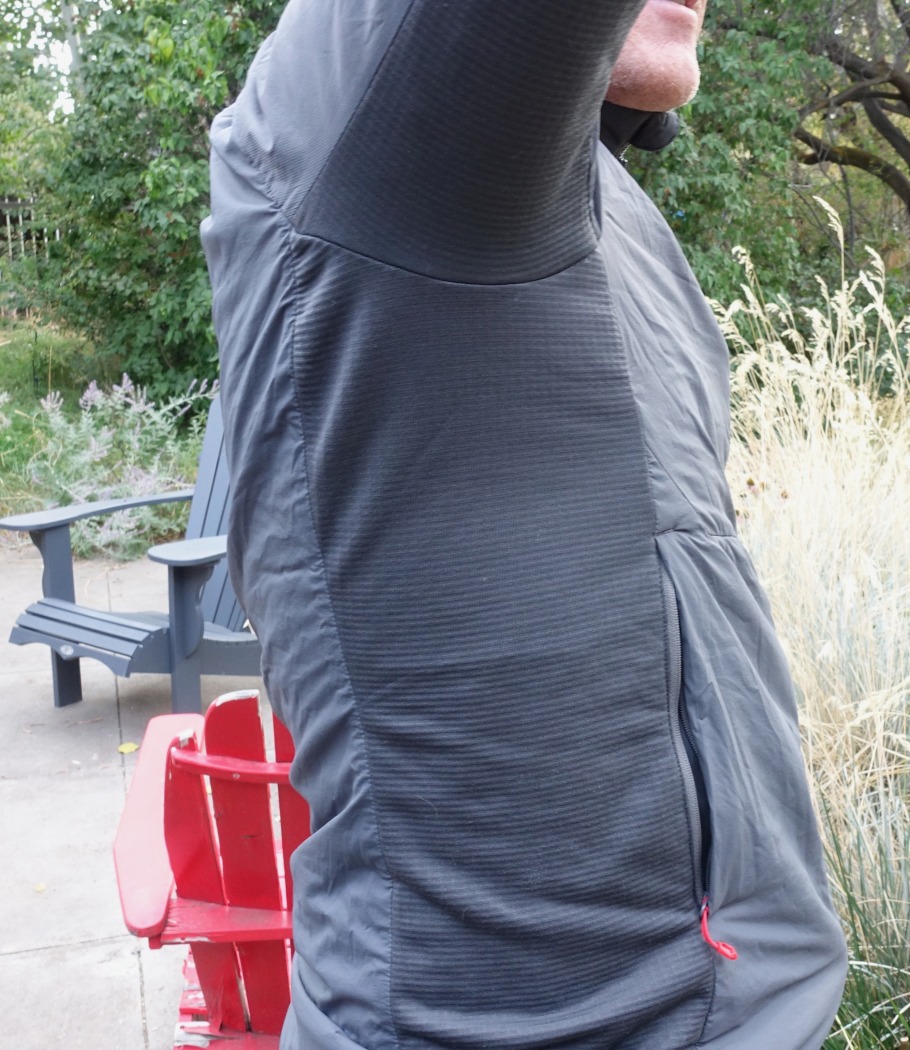
In contrast, the Fireball Lite’s sidepanels are a stretch performance fleece offering excellent articulation and breathability.
The original Nano-Air hoody was just too hot for me to wear on the ups unless it was, say, 15 degrees Fahrenheit or lower. Now, on cold mornings I often use a recent iteration of the Nano-Air vest over a thin hoody while skinning.
The Nano-Air Vest and the newer Nano-Air Hoody/Jacket have a face fabric with 40 CFM (cubic feet/minute) permeability and 60-gram* FullRange synthetic fill. To contrast a bit, and to get to the core of this review, the Montane Fireball Lite (no hood) active insulation jacket has slightly different stats. The Fireball Lite has 30 CFM face fabric on the front, back, and sleeves and 30g/m2 Dynamic Eco Insulation in the core and collar. The side panels are a soft-faced stretchy thermo-grid. Both pieces are treated with a non-PFC DWR. The Fireball Lite’s DWR is rated as 80/20, meaning 80% of the effective repellency remains after 20 washings.
(*Patagonia does not clarify if it is 60g/m2.)
Want more fabric stats? The face fabric on the Fireball lite is 64g/m2, 90%Nylon, and 10% Polyurethane with a 12Dx30D Denier rating. The Nano-Air shell and lining are 1.7-oz/yd2 polyester. Both jackets are durable under normal wear and tear. Keep away from flames, and try not to snag it on a tree. Otherwise, beat them up.
Although many backcountry skiers rave about the Arc’Teryx Proton LT (yet another worthy active insulation piece…I don’t have one on hand), I’m comparing the Montane Fireball Lite to the Nano-Air because many consider it to be an industry standard.
CFM and Insulation
We are not diving into gas laws here. But the difference between 40CFM of the Nano-Air and 30CFM of the Fireball Lite would seem significant. Ten cubic feet of more or less anything over a minute seems to be a lot. Still, a reliable industry insider tells me that the CFM scale is logarithmic and that a 10CFM difference at this level is fairly minimal, versus points lower on the scale where a difference of 10CFM is huge.
This is where I’m bringing up the concepts of apparent and absolute to clarify how the jackets perform.
The Sun’s apparent magnitude is damn bright — that’s because it’s the closest star to Earth. But its absolute magnitude among the deep universe of stars makes the Sun sort of meh; it’s, in fact, an average star in terms of magnitude. There are much brighter stars out there in the Cosmos.
Back to the jackets. The apparent breathability of the Montane Fireball Lite seems greater than the Nano-Air despite the Nano’s greater CFM rating. That may have to do with the type/amount of insulation in the Nano-Air relative to the Fireball Lite. That difference in perceived breathability may also be due to the Fireball Lite’s uninsulated side panels. It’s hard to say. There are several variables in play.
For me, the Fireball Lite feels more breathable. Does that mean it is absolutely more permeable to air than the Nano-Air? I’m saying yes. Given the same conditions, I am more comfortable skinning in the Fireball Lite than the Nano-Air.
My layering system with active insulation is on the light side. I wear a polypro T-shirt and sometimes a TNF Futurefleece Full-zip hoodie, which I think is on the thin side of hoodies; it seems thinner than an R1 fleece hoody).
(Note: Patagonia used to make a tasty version of the Nano called the Nano-Air Light Hybrid, with 40g insulation and a light grid-fleece back and side panels. The Montane Fireball Lite is more akin to that discontinued piece.)
The Fireball Lite, like the Nano-Air, does not protect from robust wind. For days in the mountains without precip and some expected gusting, I always bring a lightweight BD Distance wind shell for 100% windproofing.
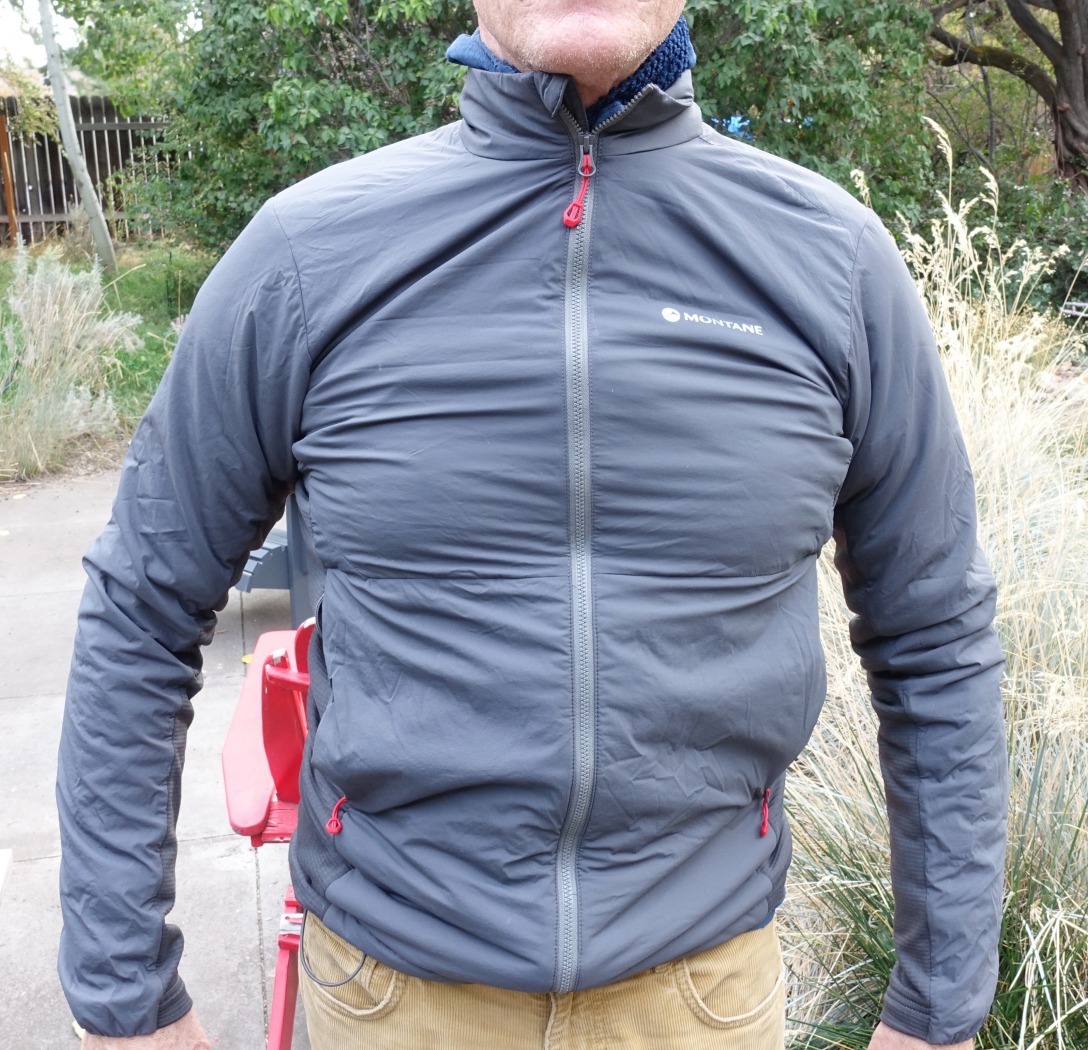
Montane calls the fit of the Fireball Lite “Trim – Close-fitting for fast-moving, active users with added articulation.” For me, the fit across the chest was ever so tight. But with the fabrics excellent four-way stretch, mobility is not diminished.
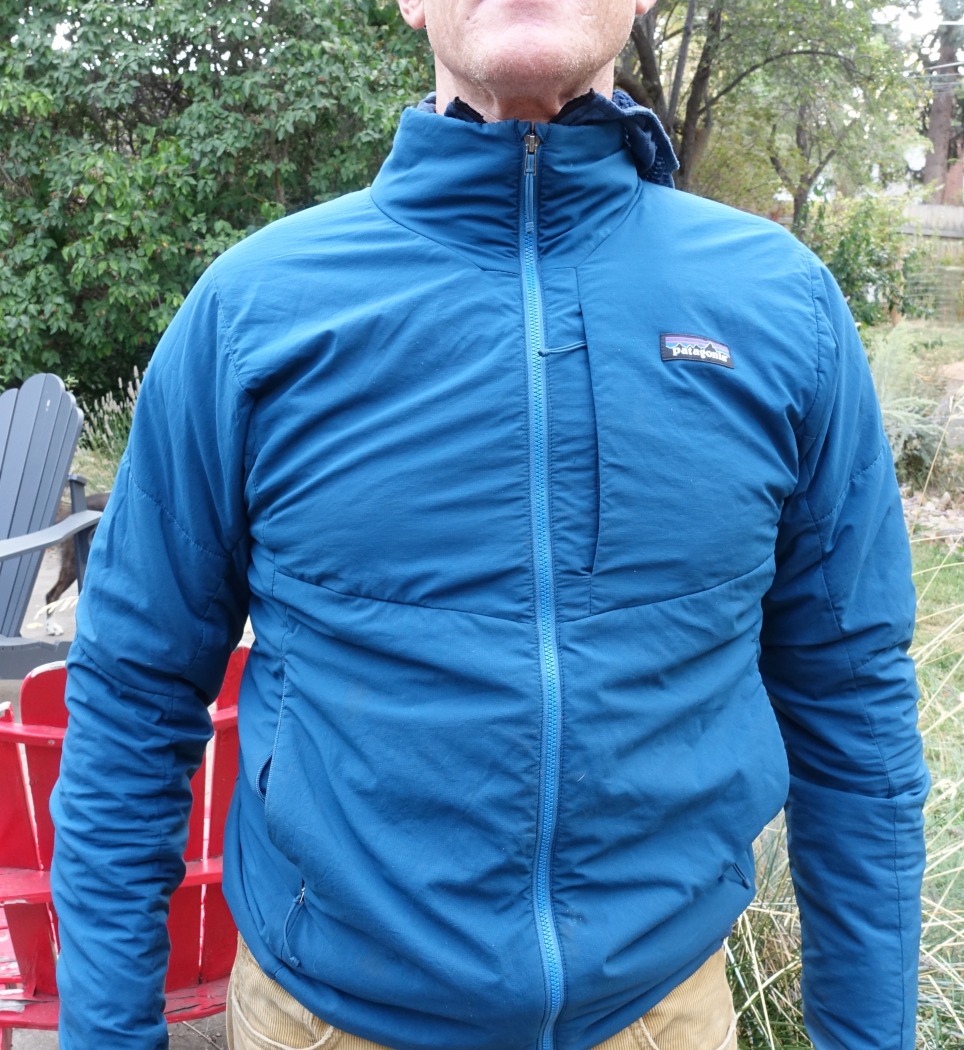
The fit of the Nano-Air is just a bit more relaxed than the Fireball Lite, and is most noticeable across the chest.
The Fit
I do like fitted pieces. And the Montane Fireball Lite is fitted. They call it “Trim – Close-fitting for fast-moving, active users with added articulation.”
I’m most often a solid medium, no matter the brand. In the Nano-Air, the medium sits perfectly on my shoulders, extends nicely to my waist, and the sleeve length is spot-on. Most segments of the Fireball Lite fit perfectly. However, the Fireball Lite snugs up across my chest. Wearing a slightly thicker hoody as an underlayer is a no-go for me; the fit is better across the chest when wearing only a polypro T-shirt.
The Nano-Air is more relaxed for me. I would not call it Euro-fitted, and Patagonia calls it a “slim” fit.
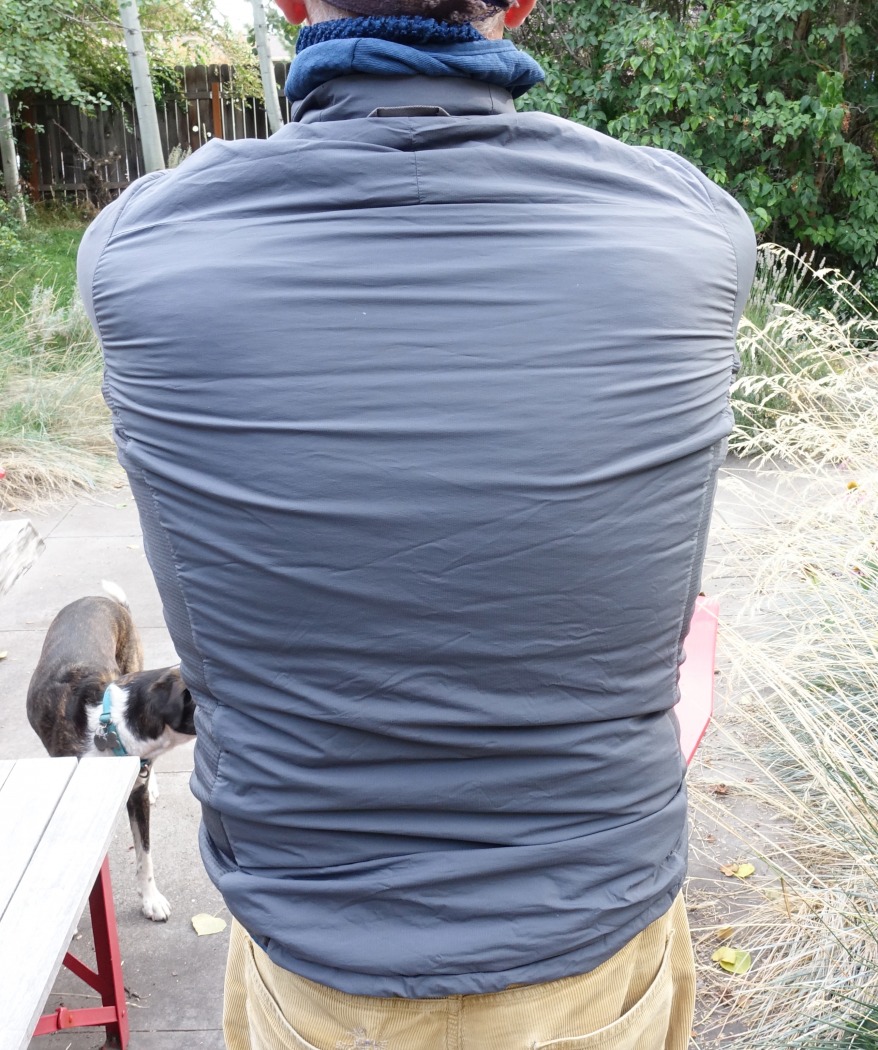
When articulating the arms across the chest, the main fabric and sidepanels offer plenty of stretch.
Montane does seem to have thought about those less Euro-fit among us. The face fabric and sidepanels have great stretch built in. And although the Nano-Air is also a four-way stretch face fabric, the Fireball Lite feels stretchier. That’s a sensation I like since the fit is tighter overall than the Nano-Air’s.
Fireball Lite: Bells and Whistles
I don’t pay much attention to DWR coatings where I live. If I suspect precipitation mid-winter, I bring a Gore-Tex hardshell. With that caveat, the DWR on the Fireball Lite, after a few washings, still holds up; the water beads.
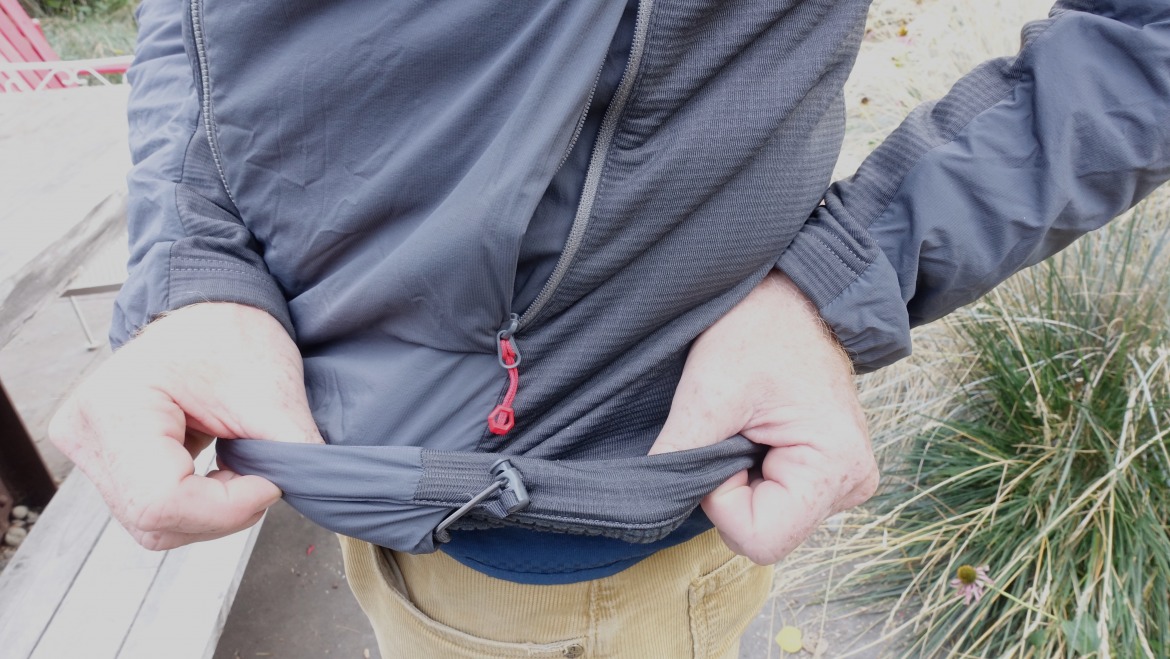
The Fireball Lite offers two zippered hand pockets and an easy to use adjustable cord to snug up the waist hem.
The jacket has two zippered hand pockets, which function fine when wearing a pack. The Fireball Lite does not have an external chest pocket. The waist is adjustable with an easy-to-tension/loosen cord lock system. (The Nano-Air has a zippered chest pocket but not an adjustable waist.)
The interior brushed fabric is soft and comfortable next to skin. As noted, I’m wearing at least a T-shirt under this jacket, but you could go without if that’s your thing.
Concluding Thoughts
As outdoor clothing companies evolve, sizing changes from time to time. Sizing principles might morph from season to season, even for a single piece. Big is now small, small is now big, or somewhere in between. What I’m saying is find what fits.
For an active insulation piece, the Fireball Lite slays. I can skin in this jacket (with minimal layering) in 15-32 degree temps. That range fluctuates, though, considering cloud coverage, humidity, and wind speed.
My only gripe is this; I want the chest to be a smidge wider. That’s not on Montane; my body must skew slightly from the norm when Montane determines the dimensions of their fitted-slim-euro sizing. Otherwise, this is praiseworthy active insulation for colder days.
Montane’s construction, design, and attention to detail are tops. Yet, despite the British company being around for over 25 years, their pieces are not ubiquitous Stateside. The Fireball Lite and its high-minded construction have me thinking I should check this brand out more often.
The Fireball Lite Insulated Jacket sells for $229.00. The hooded version is $259.00.
Jason Albert comes to WildSnow from Bend, Oregon. After growing up on the East Coast, he migrated from Montana to Colorado and settled in Oregon. Simple pleasures are quiet and long days touring. His gray hair might stem from his first Grand Traverse in 2000 when rented leather boots and 210cm skis were not the speed weapons he had hoped for. Jason survived the transition from free-heel kool-aid drinker to faster and lighter (think AT), and safer, are better.

